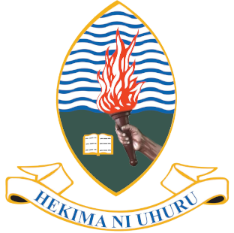Search for Staff
- Home
- Contact Details

HALIMA M. AMIR
Lecturer, Dar Es Salaam University College Of Education
Education:
Ph.D. in Botany , University of Dar es Salaam, 2022
Teaching:
- Undergraduate courses: Plant ecology, Taxonomy of high plants, Plant physiology and Anatomy of angiosperms.
- Postgraduate courses: Environmental education, Biodiversity conservation and management
Research:
Ecology; Ecosystem resilience, Climate change, Ecosystem functioning and services, Biodiversity conservation. Ethno-botany and Ethno-medicine, plant taxonomy and systematics, Food security.
Projects:
- Screening of phytochemicals, toxicity, antimicrobial and antioxidant activities of the mostly used plants for treatment of respiratory disorders in Tabora region. Researchers: Halima Mvungi Amir (PI), David Sylvester Kacholi, and Steven Nyandoro (Co-PIs). Amount: 29,999,650.00 TZS (12,850 USD). Duration: 1 year (March 2023 to February 2024). Funding: UDSM the 5th Call for competitive research and innovation grants 2022/20223.
- Development of poultry feed from under-utilized food wastes: A strategic step towards value added food wastes and improved public health in Tanzanian Cities. Researchers: James Tano Zacharia (PI), David Sylvester Kacholi, Halima Mvungi Amir, and Rita Alex Lyatuu (Co-PIs). Amount: 100,000,000.00 TZS (42,850 USD). Duration: 1 year (March 2023 to February 2024). Funding: UDSM the 5th Call for competitive research and innovation grants 2022/20223.
- An Ethno-linguistic Survey of Datooga Plant names and their usage in treatment of human and Cattle Diseases". Researchers: Kuria Michael Mdoe (PI), Amani Lusekelo and Halima Mvungi Amir (Co-PIs). Amount: 20,000,000.00 TZS. (8570 USD) Duration: 1 year (March 2023 to February 2024). Funding: UDSM the 5th Call for competitive research and innovation grants 2022/20223.
- Ethnolinguistic and Ethnobotanical Investigation of Medicinal Plants Used by Nyamwezi and Sukuma People in Tanzania: A Case of Treatment of Respiratory Disorders. Researchers: Amani Lusekelo (PI) and Halima Mvungi (CO PI). Funding: University of Dar es Salaam (UDSM) Competitive Research and Innovation Grants – 2020 Project Registration Number DUCE-20172 1.1
- Ethnobotanical survey of medicinal plants in Tabora region, Tanzania. Researchers: David Sylvester Kacholi (PI), Halima Mvungi Amir (CO PI). Funding: DUCE Competitive Research and Innovation Grants – 2019. Project Registration Number DUCE-20030
- Species composition and carbon sequestration in regenerating Miombo woodland in Tabora region. Funding: NORAD through the NORHED project (UGA-13/0019)
- Taxonomic study of selected Aloe species of Tanzania and the associated indigenous Knowledge Funding: World bank through STEP project DUCE-2009
Publications:
- Kacholi, D.S. and Amir, H.M., 2024. Ethnobotanical survey of anti-constipation medicinal plants used in Sikonge District, Tanzania. Ethnobotany Research and Applications, 28, pp.1-11.
- Kacholi, D.S., Kalokora, O.J., Amir, H.M. and Mogha, N.G., 2023. Ethnogynaecological medicinal plants used by Tanzanian communities against female infertility and menstrual disorders–A comprehensive review. Ethnobotany Research and Applications, 26, pp.1-25.
- Kacholi, D.S. and Amir, H.M., 2023. Ethnobotanical study of medicinal plants traditionally used against erectile dysfunction in Tabora region, Tanzania. Ethnobotany Research and Applications, 25, pp.1-12.
- Kacholi, D.S. and Amir, H.M., 2022. Ethnomedicinal survey of antidiarrheal plants of the Nyamwezi people of Nsenda ward in Urambo District, central western Tanzania. Ethnobotany Research and Applications, 24,1-14.
- Kacholi, D.S. and Amir, H. M., 2022. Herbal remedies used by traditional healers to treat haemorrhoids in Tabora region, Tanzania. Pharmaceutical Biology, 60(1), pp.2182-2188. https://doi.org/10.1080/13880209.2022.2136204
- Mogha, N.G., Kalokora, O.J., Amir, H.M. and Kacholi, D.S., 2022. Ethnomedicinal plants used for treatment of snakebites in Tanzania–a systematic review. Pharmaceutical Biology, 60(1), pp.1925-1934. https://doi.org/10.1080/13880209.2022.2123942
- Kacholi, D. S., and Amir, M. H. (2022). "Ethnobotanical survey of medicinal plants used by traditional healers in managing Gonorrhoea and Syphilis in Urambo District, Tabora Region, Tanzania." Journal of Herbs, Spices & Medicinal Plants 28(2):179-192. https://doi.org/10.1080/10496475.2022.2035476
- Kacholi, D.S. and Amir, H.M, 2021. Plants Used by Nyamwezi Traditional Health Practitioners To Remedy Sexually Transmitted Infections in Sikonge, Tanzania. Journal of Education, Humanities and Sciences, 10 (6): 89–101.
- Amir, H. M., & Manoko, M. L. (2020). Does the Seedling Emergence Technique Limit the Detection of Seeds of Miombo Species in Miombo Woodlands?.Journal of Education, Humanities & Science (JEHS), 8(2). http://jehs.duce.ac.tz/index.php/jehs/article/view/20
- Amir, H. M., Grace, O. M., Wabuyele, E., & Manoko, M. L. K. (2019). Ethnobotany of aloe L.(Asphodelaceae) in Tanzania. South African Journal of Botany, (122): 330-335. https://doi.org/10.1016/j.sajb.2019.01.038
- Amir, H., & Manoko, M. (2018). Similarity coefficients influence the delimitation of species in the genus Aloe l.(Xanthorrhoeaceae). Tanzania Journal of Science, 44(3), 93-102. https://www.ajol.info/index.php/tjs/article/view/174912

